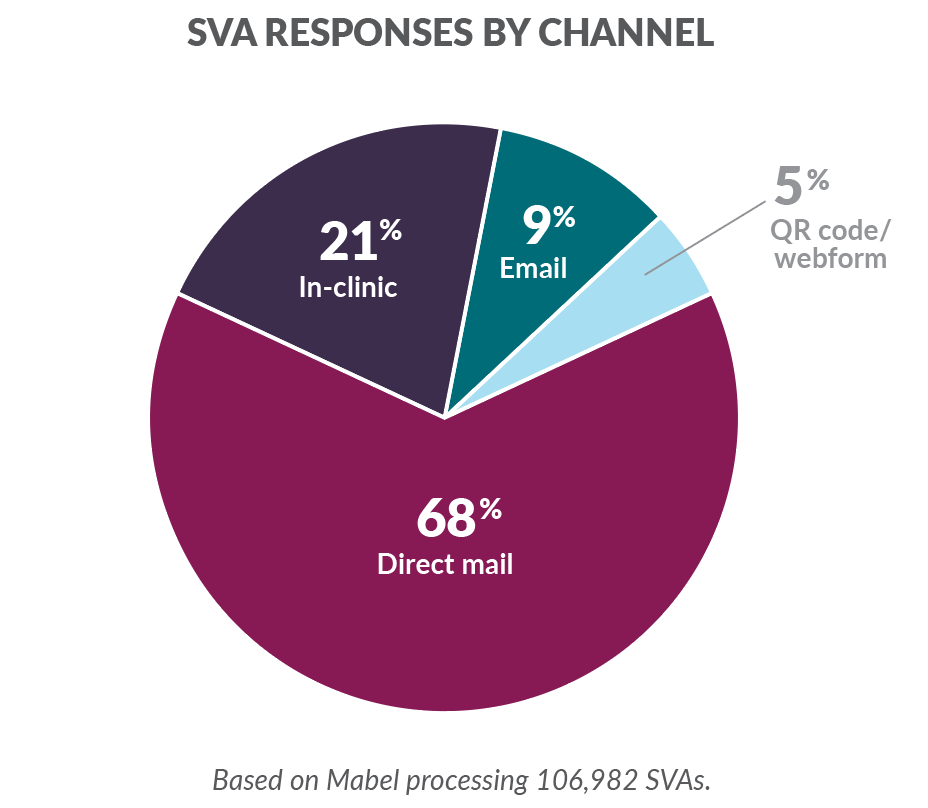What is the #1 tactic for voluntary alignment?
What leads to a winning voluntary alignment strategy?
Mabel is an end-to-end solution for voluntary alignment—the process by which Medicare patients “voluntarily align” with a primary clinician under an ACO REACH. Through a multi-channel SVA strategy that comprises of direct mail, email, in-clinic forms, and personalized QR codes/webforms, Mabel consistently helps ACOs grow their total aligned lives by 30% in 1 year.
Which voluntary alignment tactic is most effective in generating new alignments? After sending out 250,000 SVA packets and processing more than 100,000 SVA forms, here’s what we’ve seen.
Why is direct mail with Mabel so effective?
With a robust playbook and time-tested workflows, Mabel has optimized the process to help ACO REACHs achieve a dramatic increase in net-new alignments.
Provider mailings - Mabel mails personalized SVAs at scale on behalf of each provider’s office. Each SVA packet features the provider’s logo and practice return address, so patients feel as if their provider’s office personally mailed the packets.
Pre-populated forms - Each form that Mabel sends is pre-populated with the practice name, patient name, and masked MBI so patients just need to sign and date, and return the form to Mabel’s processing center using the pre-paid envelope (or use the personalized QR code to submit electronically).
Segmentation - Mabel uses the provider’s EMR data and the ACO’s 4i files to segment which patients are aligned vs unaligned, and targets the mail campaigns to only the unaligned patients—helping to generate new alignments quickly within a single quarter.
Redesigned forms approved by CMS - Mabel has redesigned the SVA letter and form to make it easier to complete and minimize patient errors (such as missing date or signature). These SVA materials are available in 10+ languages and sent to patients based on language preference.
To learn more about Mabel’s Voluntary Alignment Playbook, please use the link below to schedule a time.


